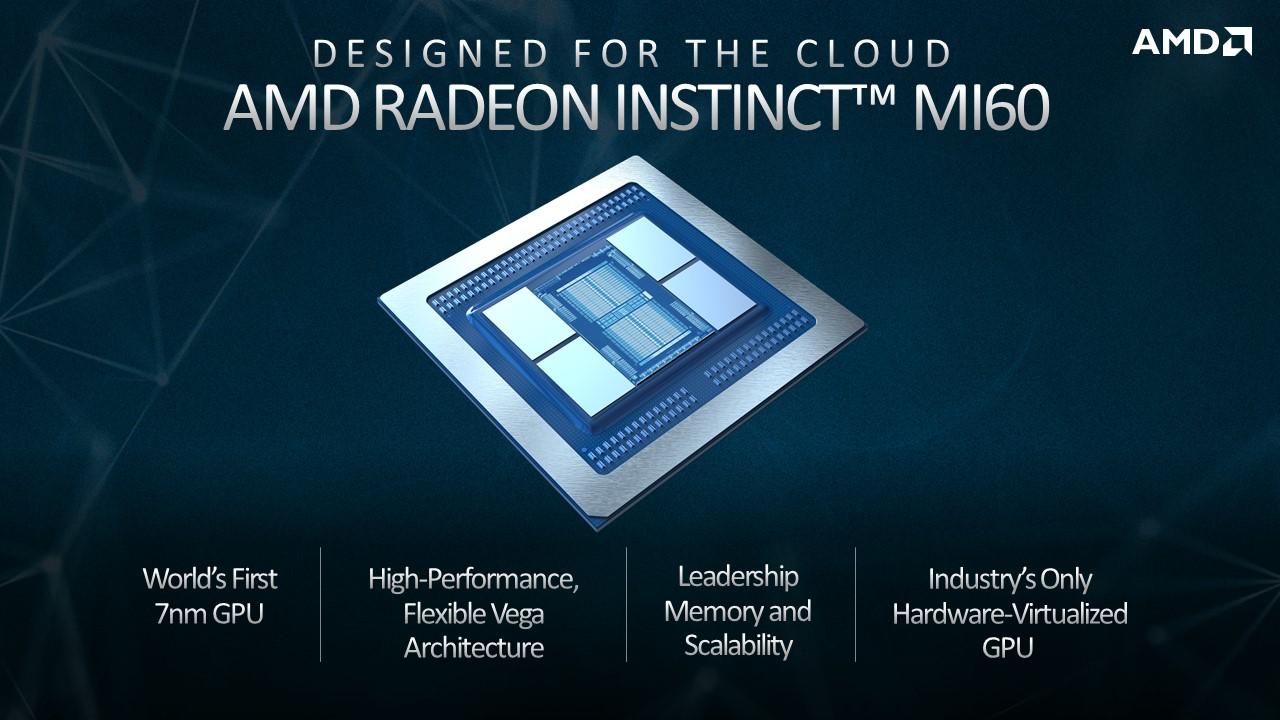AMD has announced the latest GPU with their 7nm process, going all in on this new node. And yesterday, the fruits of their labor began to show with the announcement of the MI60.
With the announcement of the Radeon Instinct MI60 and MI50, there are a lot of numbers to dissect. But the most important one to start with, in my opinion, is the transistor count and size of the package. According to AMD, the MI60 sits at 13.2 billion transistors on a 331.46mm^2 package, while the MI25, its predecessor, has 12.5 billion transistors in a 484.8mm^2 package. Doing some quick math gives us a transistor per millimeter count of 39.824 million tr/mm^2 for the MI60 and 25.784 million tr/mm^2 for the MI25. According to the creator, this comes out to a massive 58% improvement. My math says it’s only a 54% improvement, but it’s still a very impressive jump.
However, the leap in transistor count means nothing if performance isn’t improved. AMD presented graphs indicating that the MI60 is capable of outperforming Nvidia’s Tesla V100. I would take this claim with a grain of salt, as the benchmarks are provided by AMD themselves, and we’ll have to wait and see real world performance to validate these claims.
In contrast, the MI60 has a whopping 32GB of HBM2 memory. More VRAM than most PCs have in standard RAM. It also clocks in at 1 GHz. On top of all of that, you are able to connect up to 4 together physically with AMD’s Infinity Fabric™. Using this connection, up to 200 GB/s of bandwidth is given to each GPU to communicate with the other cards. The MI60 also features VRAM with 1 TB/s bandwidth, the first GPU to reach said speed. Coupling that with the Infinity Fabric™, the cards are able to have a collective pool of of RAM, unlike the past. A very promising aspect for professionals seeking these GPUs for work station purposes.
To pair with that VRAM, the cards are also now equipped to use PCIe 4.0, which is capable of delivering up to 64 GB/s. The previous PCIe 3.0 was only capable of delivering 32 GB/s. Another world’s first for this card.
There are also FLOPs performances released as well from AMD that buyers might find informative. Peak performance for the MI60 in FP32 had the card reaching 14.7 TFLOPs, FP64 having 7.4 TFLOPs and INT8 hitting 58.9 TFLOPS. Again, these are performance benchmarks given by AMD, so pass the salt.
But what does that mean for ordinary people like you and me? Well, nothing yet. Regular consumers and enthusiasts will not be seeing tech like this for a while. My guess being in the second half of 2019. And until that point, we will be sitting here in awe as the pros get to do amazing things with their new toys.













